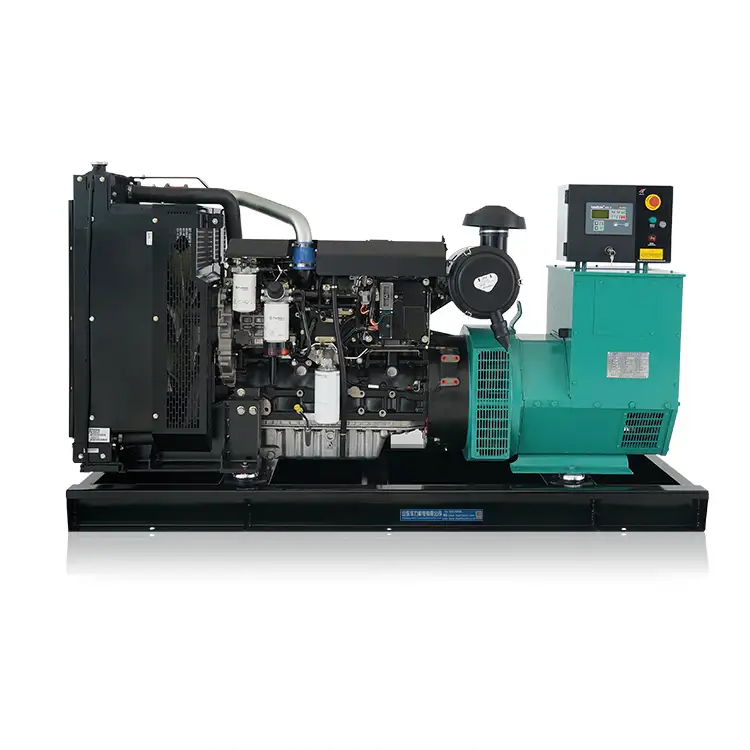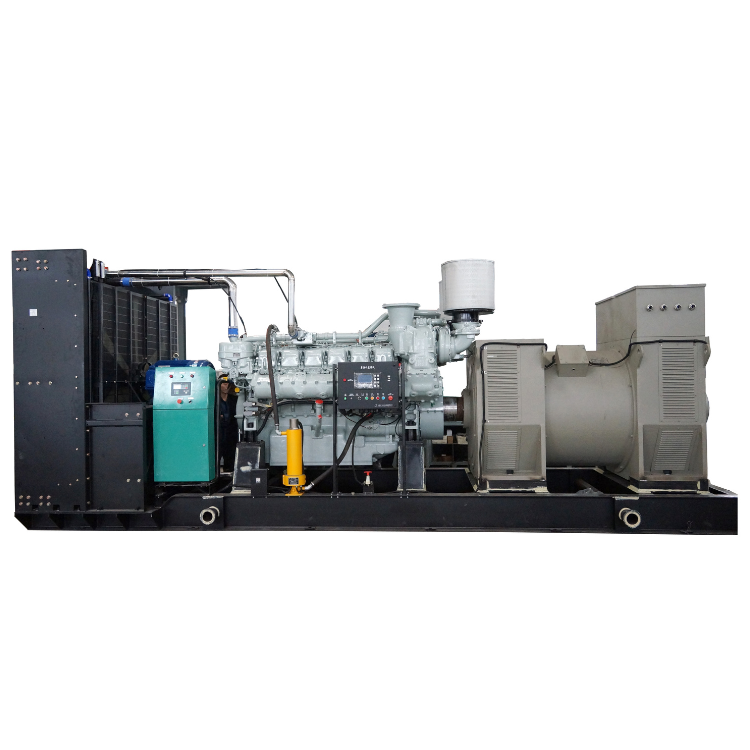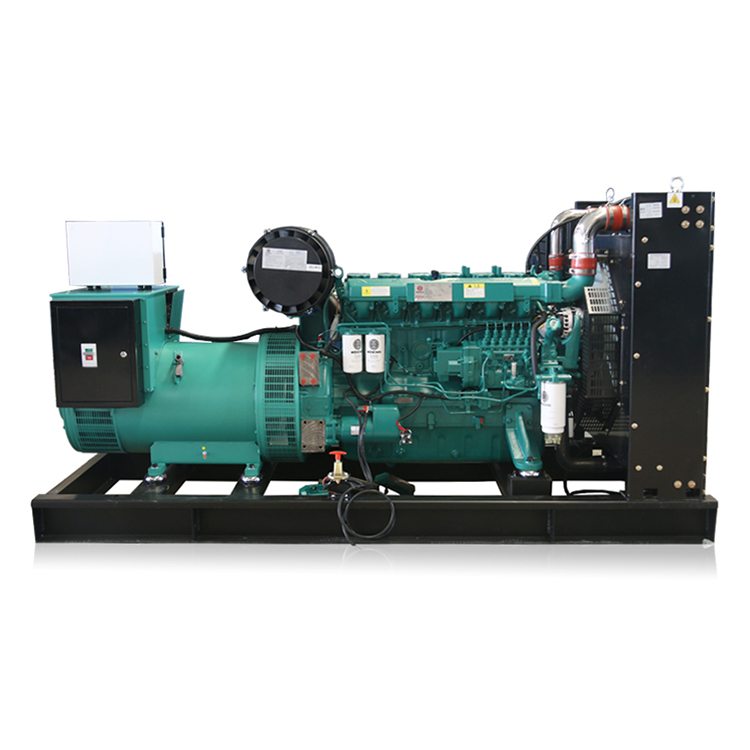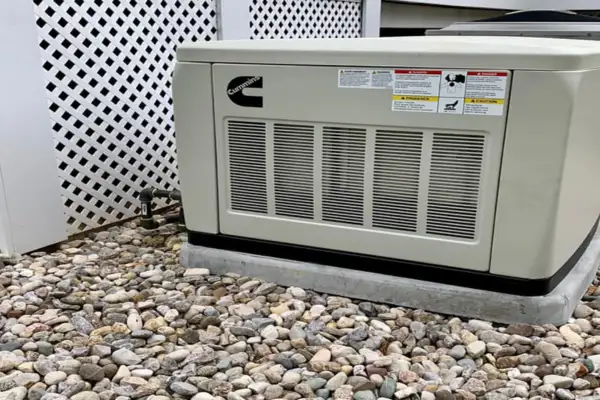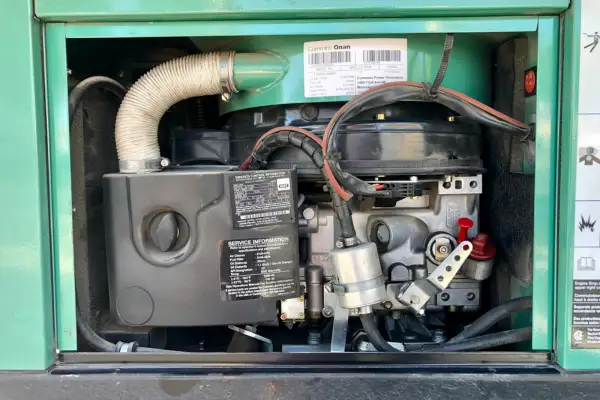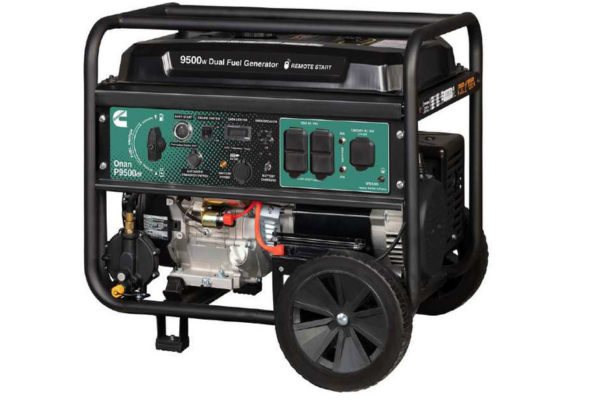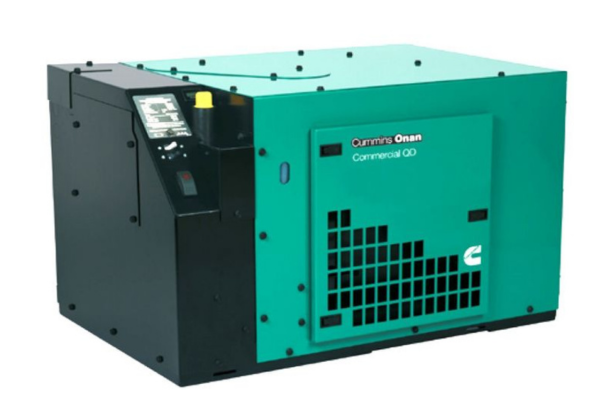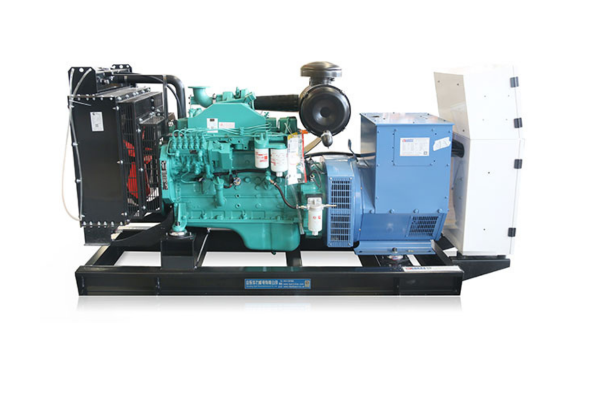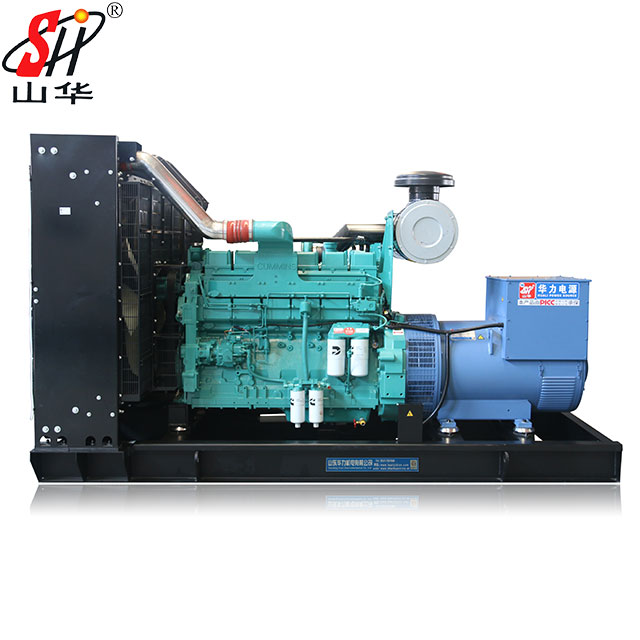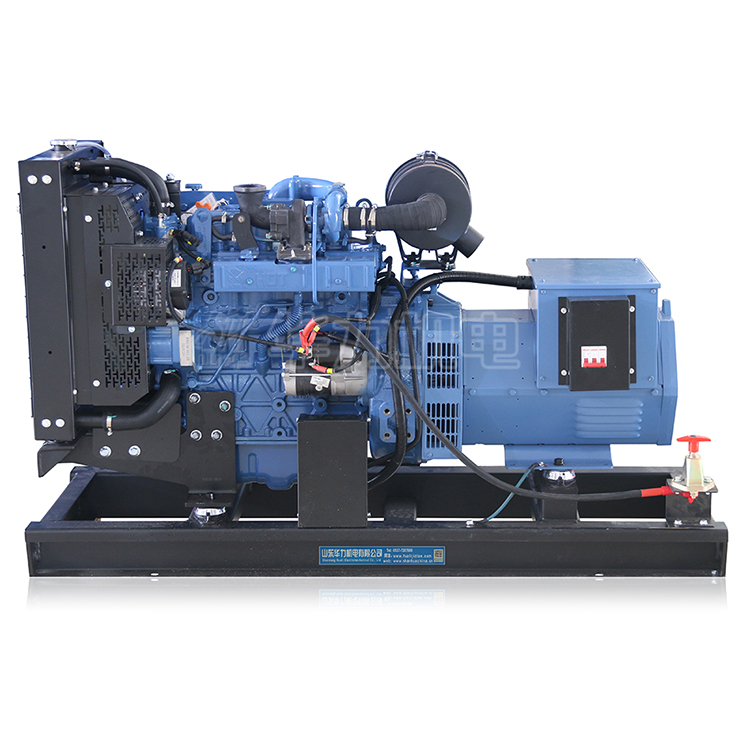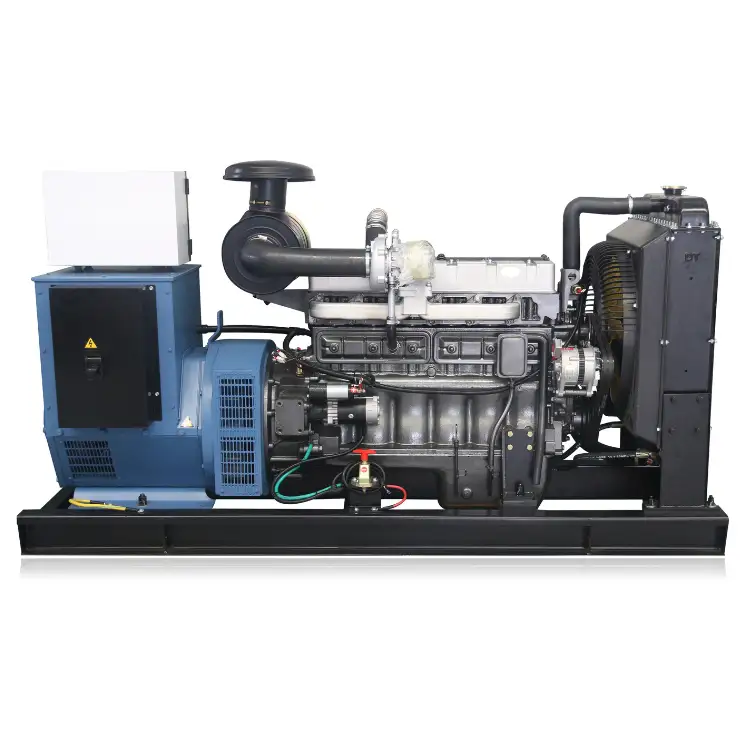Cummins is widely recognized as a leading force in the field of energy solutions, especially known for its robust and efficient power systems. Among their extensive product offerings, the Cummins whole house generator stands out as a premier choice for homeowners seeking reliable backup power solutions.
Understanding Whole House Generators: Whole house generators are designed to provide a backup power supply capable of handling the entire electrical load of a home, not just essential circuits. This type of generator is increasingly important in modern home energy systems, particularly as more homeowners look to ensure uninterrupted service during power outages.
The growing importance of whole house generators is reflected in their ability to seamlessly integrate into home energy systems, providing peace of mind and continuity in daily activities, regardless of external power interruptions. Cummins whole house generators are particularly valued for their ability to offer consistent, reliable power with the efficiency that Cummins is known for.
By choosing a Cummins generator, homeowners benefit from a commitment to quality that has been honed over a century of innovation in power generation. Whether facing severe weather conditions or unexpected utility failures, a Cummins whole house generator ensures that your home remains powered, safe, and comfortable.
This introduction sets the stage for a deeper exploration of the benefits and practical considerations associated with selecting and operating a Cummins whole house generator, ensuring that homeowners are well-equipped to make informed decisions about their home energy needs.
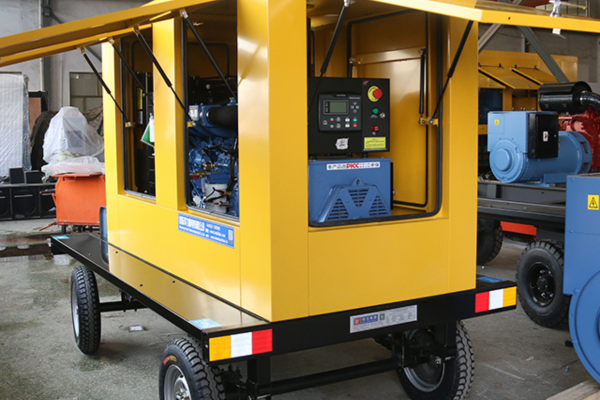
Benefits of Installing a Cummins Whole House Generator
Reliability and Energy Efficiency: Cummins whole house generators are renowned for their reliability, which is a crucial attribute for homeowners depending on backup power during outages. These generators ensure that power is consistently available, maintaining the operation of critical systems such as heating, cooling, refrigeration, and medical equipment. The reliability of Cummins generators stems from their robust design and advanced engineering, which reduce the likelihood of failures during critical times.
Energy efficiency is another significant benefit of Cummins whole house generators. These generators are designed to provide power effectively while minimizing waste. This efficiency not only helps in reducing the operational costs associated with running the generator but also lessens the environmental impact by reducing fuel consumption and emissions.
Contribution to Home Energy Optimization: Installing a Cummins generator can significantly contribute to the overall energy optimization of a home. This is particularly beneficial in regions where power outages are frequent or in rural areas where grid stability can be an issue. The generator seamlessly integrates into the home’s energy system, providing a smooth transition from grid power to generator power without interruption to the household’s daily activities.
Furthermore, for homes equipped with smart energy systems, Cummins generators can be integrated to work in conjunction with other home energy management solutions. This integration allows for automated energy balancing, where the generator’s operation can be optimized based on real-time energy demands and conditions, further enhancing energy efficiency and cost-effectiveness.
Overall, the benefits of installing a Cummins whole house generator extend beyond just providing backup power. They contribute significantly to making homes more resilient, energy-efficient, and capable of handling energy management more autonomously. This makes Cummins generators an ideal choice for homeowners looking to improve their home energy systems’ reliability and efficiency.
Choosing the Right Cummins Generator for Your Home
Selecting the appropriate Cummins whole house generator involves considering several factors to ensure that the model you choose meets your home’s energy needs effectively and efficiently. Here’s how to make the right choice:
Factors to Consider When Selecting a Generator:
- Size and Output Capabilities: The size of the generator should be based on the total wattage of all appliances and systems you need to operate during a power outage. To calculate this, list all essential appliances and systems, then add up their wattage requirements. This total will guide you in choosing a generator with adequate output capabilities to handle your home’s load without being overtaxed.
- Fuel Type: Cummins generators are available in various fuel types, including diesel, natural gas, and propane. Each fuel type has its advantages and considerations, such as availability, storage, cost, and impact on the environment. Propane and natural gas are popular for residential use due to their clean burning and lower storage risks.
Guidance on Calculating Your Home’s Energy Requirements:
- Conduct an Energy Audit: To accurately determine your energy needs, conduct a home energy audit. This can be done by a professional or as a DIY project using guidance from energy conservation websites. An energy audit will help you identify not only your total energy usage but also areas where you can improve energy efficiency.
- Use Cummins’ Size Calculator: Cummins offers an online generator size calculator that helps homeowners determine the right generator size based on their specific energy usage and needs. This tool takes into account the starting wattage requirements of appliances, which are crucial for avoiding under-sizing your generator.
Matching Generator Capacity to Home Energy Needs for Optimal Efficiency:
- Avoid Over-sizing and Under-sizing: Choosing a generator that closely matches your calculated energy needs is crucial. An oversized generator can lead to unnecessary fuel consumption and increased operational costs, while an undersized generator may not effectively handle your power needs during an outage.
- Consider Future Energy Needs: If you plan on adding more appliances or features to your home that will consume power, such as a hot tub or a second air conditioner, consider these in your calculations. It’s often wise to choose a generator with a little extra capacity than your current calculations suggest.
By carefully considering these factors, you can select the right Cummins whole house generator that will provide reliable and efficient power tailored to your specific home energy requirements. This proactive approach ensures that your generator is a valuable addition to your home, enhancing your comfort and security during power outages.
Installation Process and Best Practices
Installing a Cummins whole house generator is a crucial step that requires careful planning and execution to ensure safety and optimal performance. Here’s a detailed guide on the installation process and some best practices to follow.
Step-by-Step Overview of the Installation Process:
- Site Selection: Choose a location for your generator that is easily accessible for maintenance, away from flood zones, and complies with local codes regarding distance from the house and property lines. The site should also allow for proper exhaust venting and cooling air circulation.
- Preparation of the Site: Prepare the site by ensuring a stable and level surface. For most residential generators, a concrete pad is required to support the generator and prevent ground moisture from affecting it.
- Professional Installation: Due to the complexity and the need to comply with local electrical and building codes, it’s strongly recommended to hire a certified professional to install your generator. This ensures that all connections, including fuel, electrical, and exhaust systems, are safely and correctly installed.
- Electrical Connection: A licensed electrician should handle the electrical connections. This includes integrating the generator with your home’s electrical panel and installing a transfer switch to safely switch the home’s power supply from the utility to the generator during outages.
- Fuel Connection: Connect the generator to your home’s fuel supply—whether it’s natural gas, propane, or diesel. This step should comply with all local regulations and standards for fuel connections to ensure safety and functionality.
Tips for Ensuring a Safe and Efficient Installation:
- Compliance with Regulations: Always check local regulations and obtain necessary permits before starting the installation. This avoids legal issues and ensures that the installation meets safety standards.
- Ventilation and Safety: Ensure that the generator is placed in a well-ventilated area to prevent carbon monoxide buildup. It should also be located away from windows, doors, and ventilation intakes to prevent exhaust gases from entering the home.
- Noise Considerations: Consider the noise level of the generator and its impact on your household and neighbors. Position the generator in a location that minimizes disturbance, possibly using sound-attenuating enclosures or barriers.
Regular Testing and Commissioning:
- After installation, perform a complete system test to ensure everything is functioning correctly. This test should include running the generator under load to verify that it can handle the expected power demand and that all switches and connections work as intended.
By following these guidelines, your Cummins whole house generator will be installed safely and effectively, providing reliable backup power and optimizing home energy management. Proper installation not only extends the life of your generator but also ensures it operates efficiently, ready to provide power whenever it’s needed.
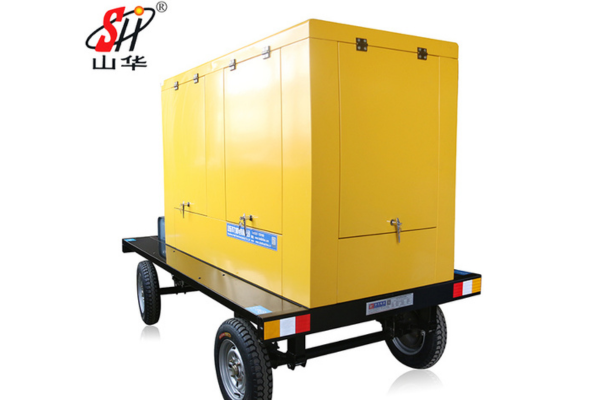
Integrating with Renewable Energy Sources
Integrating a Cummins whole house generator with renewable energy sources, such as solar panels, can significantly enhance the efficiency and sustainability of your home energy system. Here’s a guide on how to successfully combine these technologies and the benefits of creating a hybrid energy system.
How to Integrate a Cummins Whole House Generator with Solar Panels:
- Energy Management System: Install an energy management system that can seamlessly switch between solar power, generator power, and the grid based on availability and cost-effectiveness. This system should be capable of monitoring energy production and consumption in real-time to optimize energy usage.
- Automatic Transfer Switch: Ensure that your generator is equipped with an automatic transfer switch that can detect when the grid goes down. This switch should be capable of automatically activating the generator, thereby providing power when solar energy is insufficient during outages.
- Battery Storage: Consider adding a battery storage system to capture excess solar energy. This stored power can be used during peak demand times or outages, reducing reliance on the generator and saving fuel.
Benefits of Creating a Hybrid Home Energy System:
- Enhanced Energy Efficiency: By integrating solar panels with a generator, you can ensure that the most cost-effective energy source is used at all times. Solar energy can power the home during the day, while the generator can provide energy during low solar production periods or in case of grid failure.
- Increased Reliability: A hybrid system provides multiple layers of redundancy, ensuring that your home always has power. If one system fails, the other can seamlessly take over, providing uninterrupted power supply.
- Environmental Impact: Using solar energy primarily reduces your carbon footprint and reliance on fossil fuels. The generator acts as a backup, minimizing its runtime and emissions.
Implementing Smart Controls:
- Smart Inverters: Use smart inverters that can manage the flow of electricity from different sources effectively. These devices can prioritize solar energy usage, store excess energy in batteries, and manage the load when the generator is operating.
- Remote Monitoring: Implement a system that allows you to monitor and control your energy usage remotely. This technology can provide insights into your energy habits, suggest adjustments for better efficiency, and alert you to any system issues.
Integrating a Cummins whole house generator with renewable energy sources not only makes your home energy system more robust but also aligns with modern energy trends toward sustainability and efficiency. This approach not only prepares your home for future energy needs but also supports environmental conservation efforts, making it a wise investment for eco-conscious homeowners.
Maintenance and Upkeep of Your Cummins Generator
Regular maintenance is crucial for ensuring that your Cummins whole house generator operates at peak efficiency and reliability. Here’s how to establish a maintenance routine and address common issues to keep your generator in top condition.
Routine Maintenance Tasks and Schedules:
- Regular Inspections: Schedule monthly inspections to check for any signs of wear and tear or potential issues. This includes looking for leaks, checking oil and coolant levels, and ensuring that all connections are tight.
- Oil Changes: Change the oil according to the manufacturer’s recommendations, typically after every 100 hours of operation or at least annually if the generator is not used frequently.
- Air Filter Replacement: Replace the air filter every 200 hours of use, or more often if the generator operates in a dusty environment. A clean air filter ensures efficient engine operation and prevents premature wear.
- Coolant Checks: Check the coolant level before the start of every season. Replace the coolant every two years to prevent corrosion and overheating.
Troubleshooting Common Issues:
- Battery Failure: Regularly test the battery and replace it every three years. A weak or dead battery is a common cause of generator start-up failures.
- Fuel Issues: For diesel and propane generators, ensure the fuel is fresh and free from contamination. Stale or contaminated fuel can cause engine issues and reduce efficiency.
- Electrical Failures: Check electrical connections for corrosion or looseness, as these can lead to power failures or erratic operation.
Preventive Maintenance Tips:
- Exercise the Generator: Run the generator under load for at least 30 minutes each month. This helps keep the engine parts lubricated, prevents oxidation of electrical contacts, and helps use up stored fuel before it degrades.
- Keep It Clean: Keep the generator and its surroundings clean from debris and dirt. This prevents the intake of potentially damaging materials and ensures adequate ventilation.
Professional Servicing:
- Annual Service: Have a certified technician perform a comprehensive annual service. This should include checking all mechanical, electrical, and fuel systems, and making adjustments as needed.
- Record Keeping: Maintain a log of all maintenance activities, including what was done, when, and by whom. This helps in diagnosing future problems and is essential for warranty support.
By adhering to these maintenance guidelines, you can significantly extend the life of your Cummins whole house generator and ensure it provides reliable power when you need it most. Regular maintenance not only prevents unexpected downtime but also optimizes performance, making it a vital aspect of managing your home energy system.
Cost Analysis and Return on Investment
Investing in a Cummins whole house generator involves initial setup costs, ongoing maintenance, and potential energy savings. Understanding these financial aspects is crucial for homeowners considering a generator for long-term energy security.
Breakdown of Initial Costs:
- Purchase Price: The cost of a Cummins whole house generator varies depending on the model and capacity, generally ranging from $3,000 to $15,000.
- Installation Costs: Installation can be significant, typically between $500 to $5,000, influenced by factors such as the need for site preparation, electrical upgrades, and local permits.
Ongoing Maintenance Costs:
- Routine Maintenance: Annual maintenance costs, including inspections, oil changes, and part replacements, average around $200 to $500.
- Fuel Costs: Operational costs will vary based on fuel type and usage. Propane and natural gas may offer cost savings compared to diesel, particularly with fluctuating fuel prices.
Potential Savings on Energy Bills:
- Emergency Power: Avoiding the costs associated with power outages, such as spoiled groceries, temporary accommodations, or frozen pipes, can translate into considerable savings.
- Load Management: Some Cummins generators offer load management capabilities, allowing homeowners to operate more appliances on less fuel, optimizing energy usage and reducing costs.
Return on Investment (ROI):
- Property Value: Installing a whole house generator can increase your home’s resale value. Studies suggest that generators can provide a 50% to 75% return on investment through property value increase.
- Insurance Discounts: Some insurance companies offer discounts on home insurance premiums for homes equipped with a standby generator.
Long-Term Financial Benefits: Investing in a Cummins generator is not just about immediate needs but also long-term security and savings. The durability and reliability of these generators mean they can serve your home for many years, providing a reliable power source and helping to manage energy costs effectively.
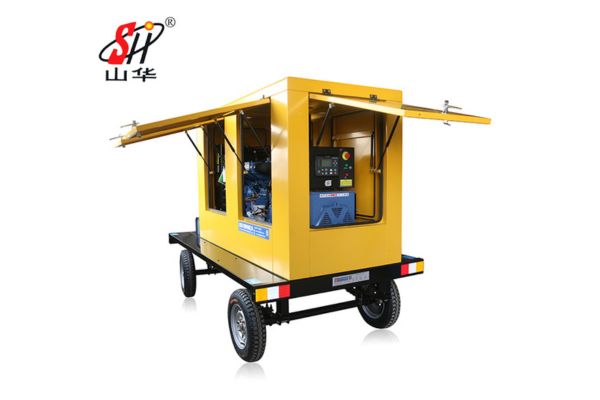
FAQs: Common Questions About Cummins Whole House Generators
When considering a Cummins whole house generator, potential buyers often have specific questions about their functionality, benefits, and maintenance. Here are some of the most commonly asked questions, providing clear and concise answers to help guide your decisions and ensure you get the most out of your investment.
- What size Cummins generator do I need for my home?
- The size of the generator you need depends on the total wattage of the appliances and systems you want to power. Calculate the combined wattage of essential items you need during a power outage and select a generator that meets or exceeds that requirement.
- How often should I perform maintenance on my Cummins generator?
- Cummins recommends conducting routine maintenance at least annually or after every 100 hours of operation, whichever comes first. This includes checking the oil level, replacing the air filter, and ensuring the battery is charged.
- Can I install a Cummins house generator myself?
- It is strongly advised to have your Cummins generator installed by a certified professional to ensure it meets all local codes and works correctly. Improper installation can lead to performance issues or safety hazards.
- What is the lifespan of a Cummins house generator?
- With proper maintenance, a Cummins house generator can last well over 20 years. The key to longevity is adhering to the recommended maintenance schedule and using genuine Cummins parts for repairs.
- Are Cummins generators worth the investment?
- Yes, Cummins generators are known for their reliability, durability, and efficiency. They are an excellent investment for ensuring continuous power supply during outages, particularly in areas prone to severe weather.
References
Buying and Installation: Cummins offers a range of home generators suitable for various needs, from portable to whole house systems. They emphasize the importance of professional installation by authorized dealers to ensure safety and compliance with local codes
Choosing the Right Size: It’s crucial to select a generator that matches your home’s power requirements. Cummins provides a generator size calculator on their website, which helps you determine the right size based on your home’s square footage and essential power needs
Maintenance and Support: Regular maintenance is advised to keep the generator in optimal condition, with specific schedules available in the operator’s manual. Cummins also offers a variety of support options through their dealer network
Warranty and Customer Support: Cummins generators come with different warranty options depending on the model, which can greatly benefit the user in terms of reliability and service support over the years


